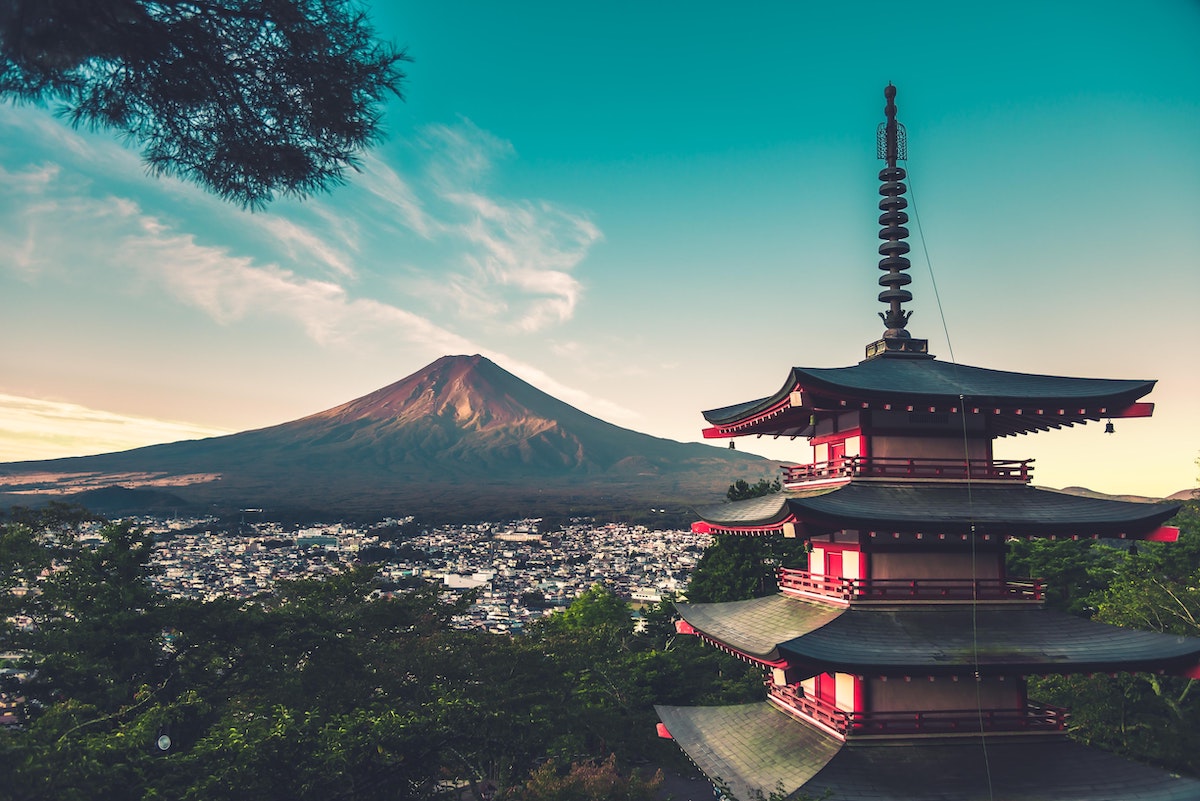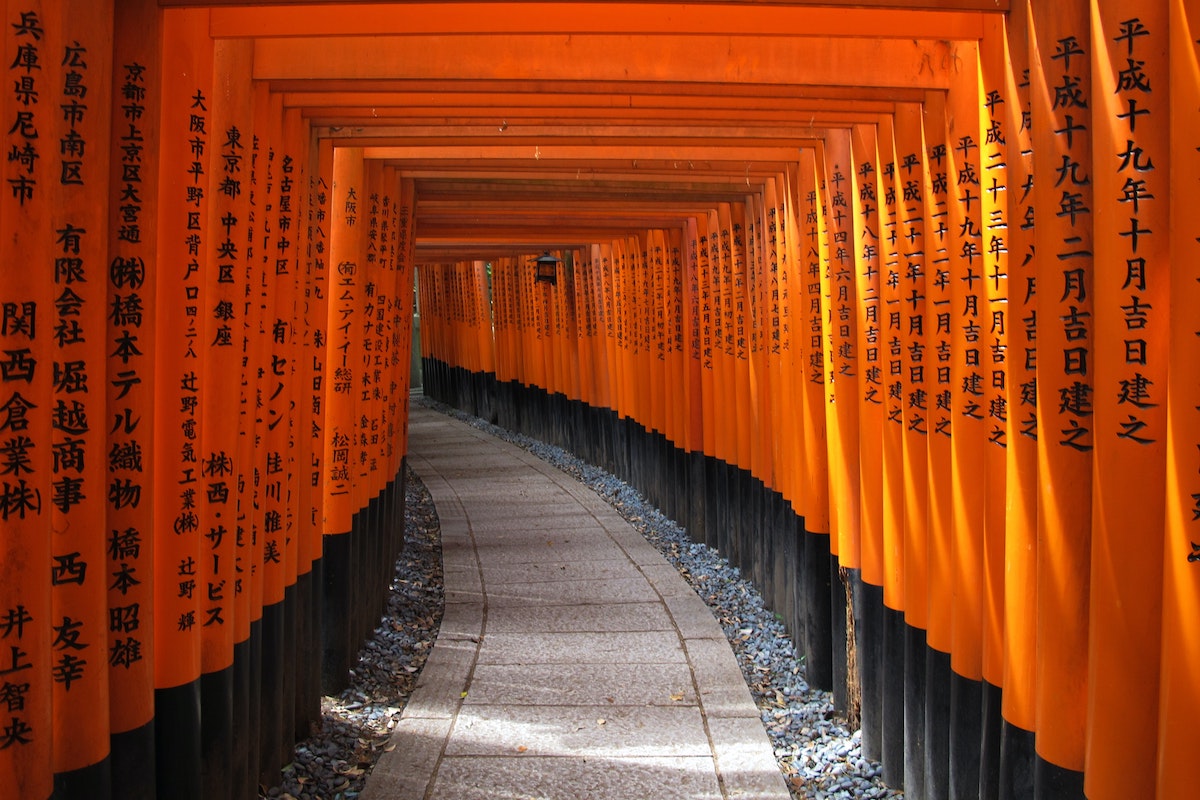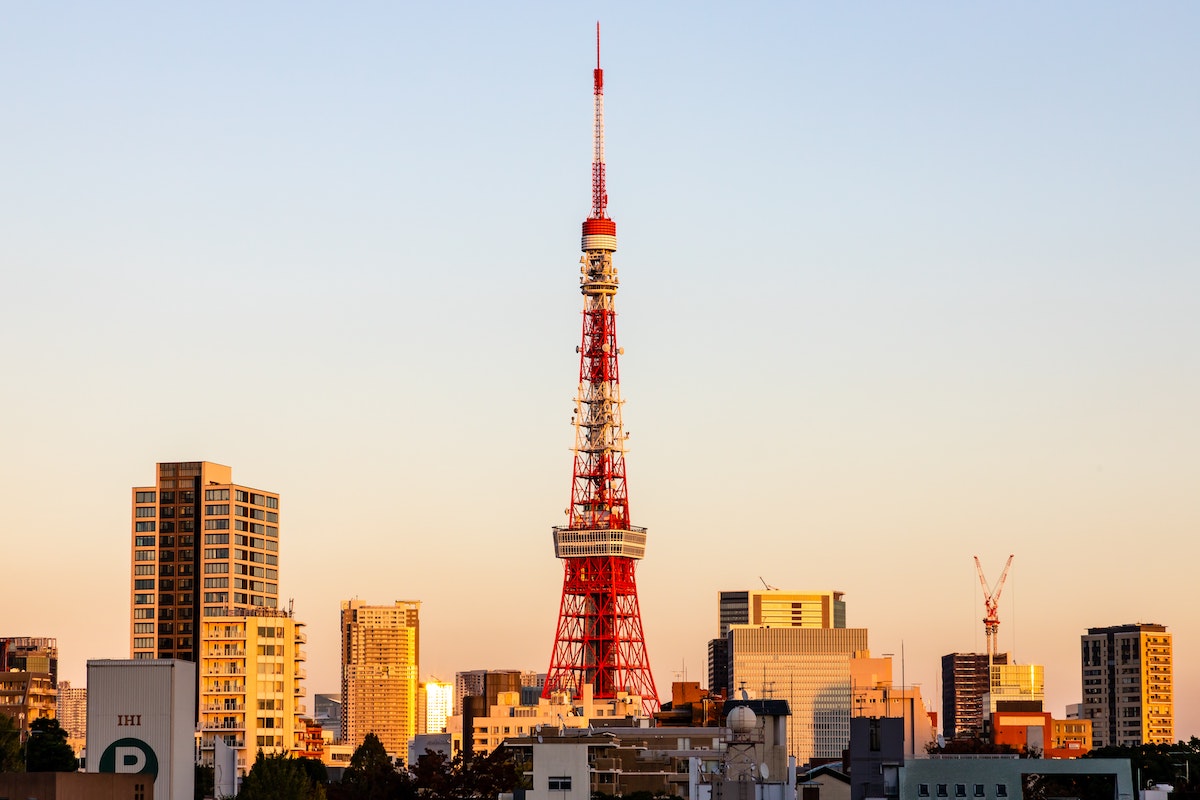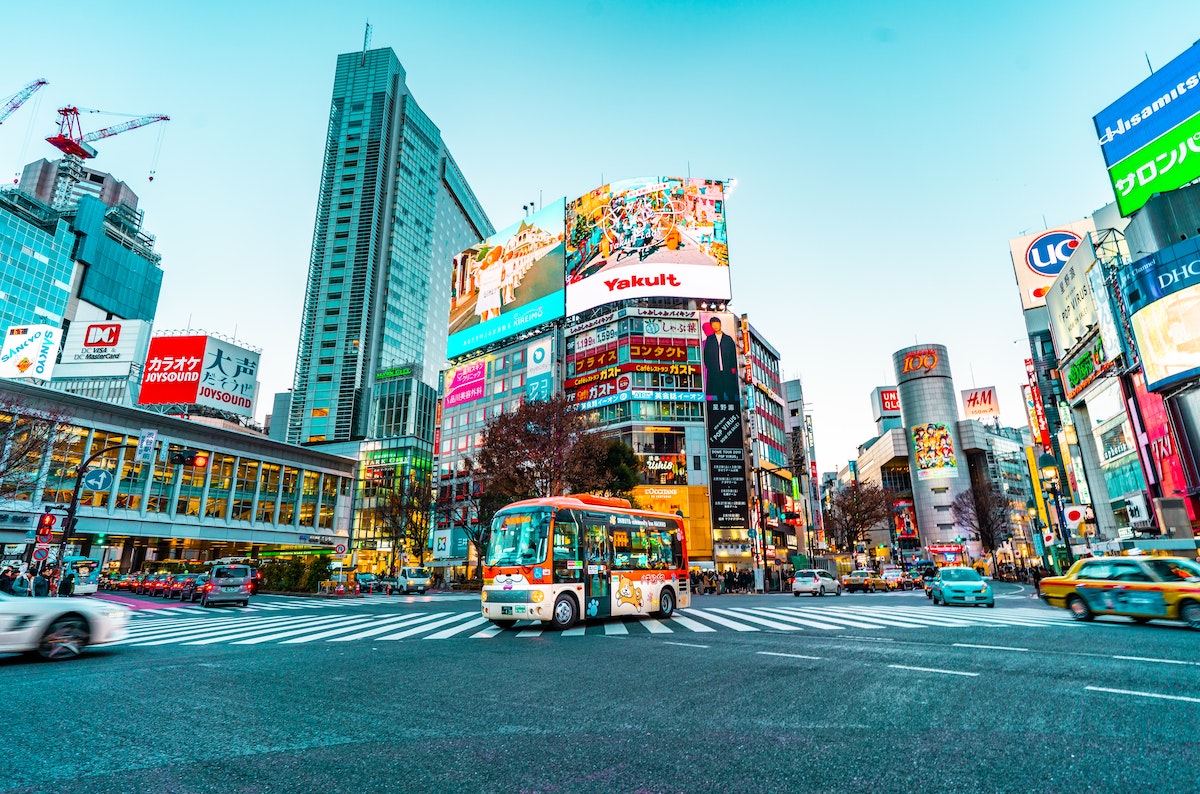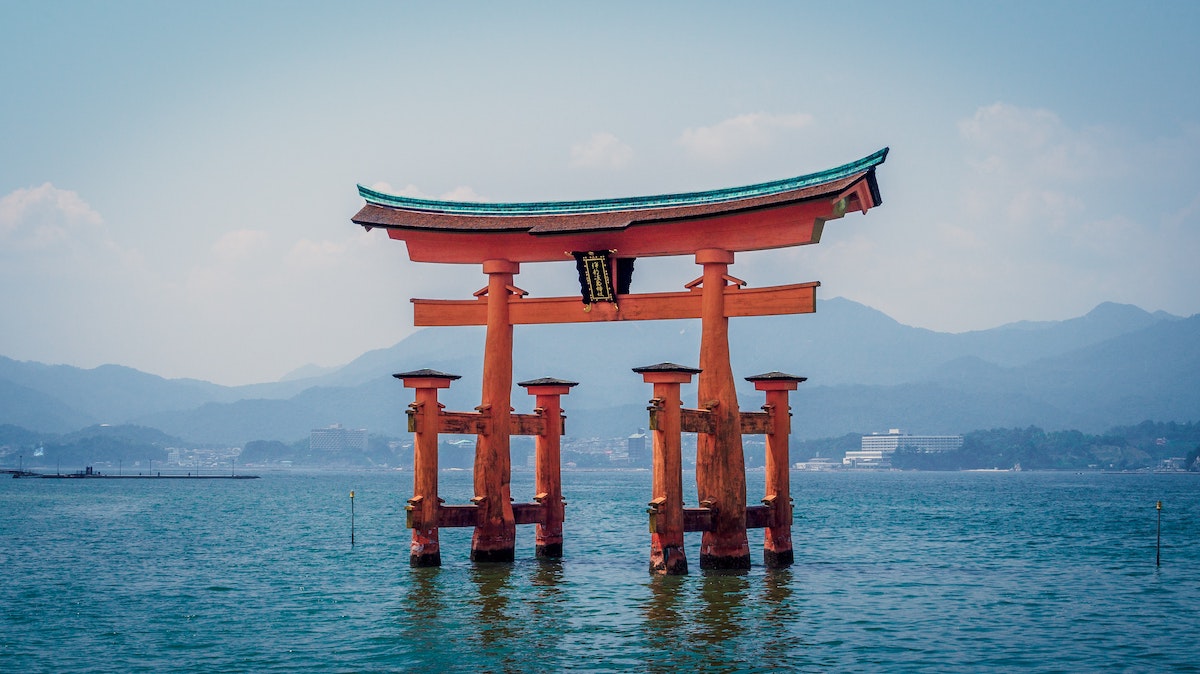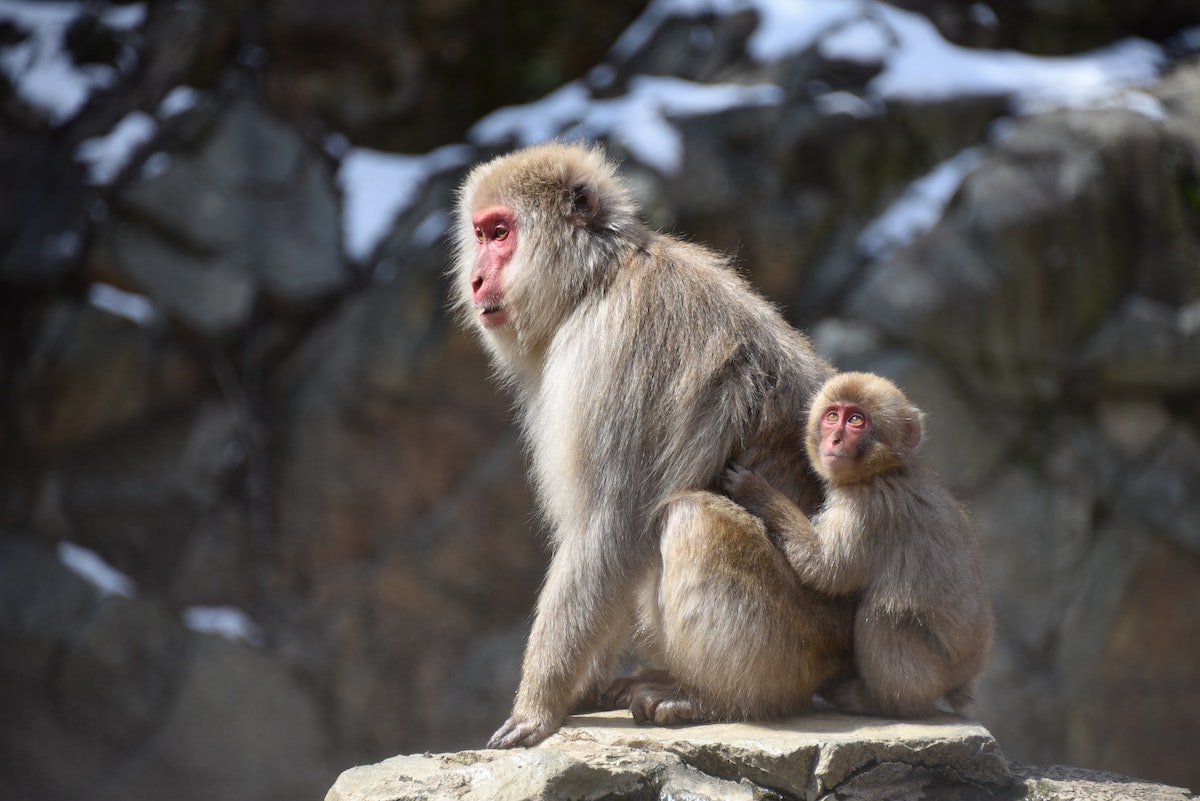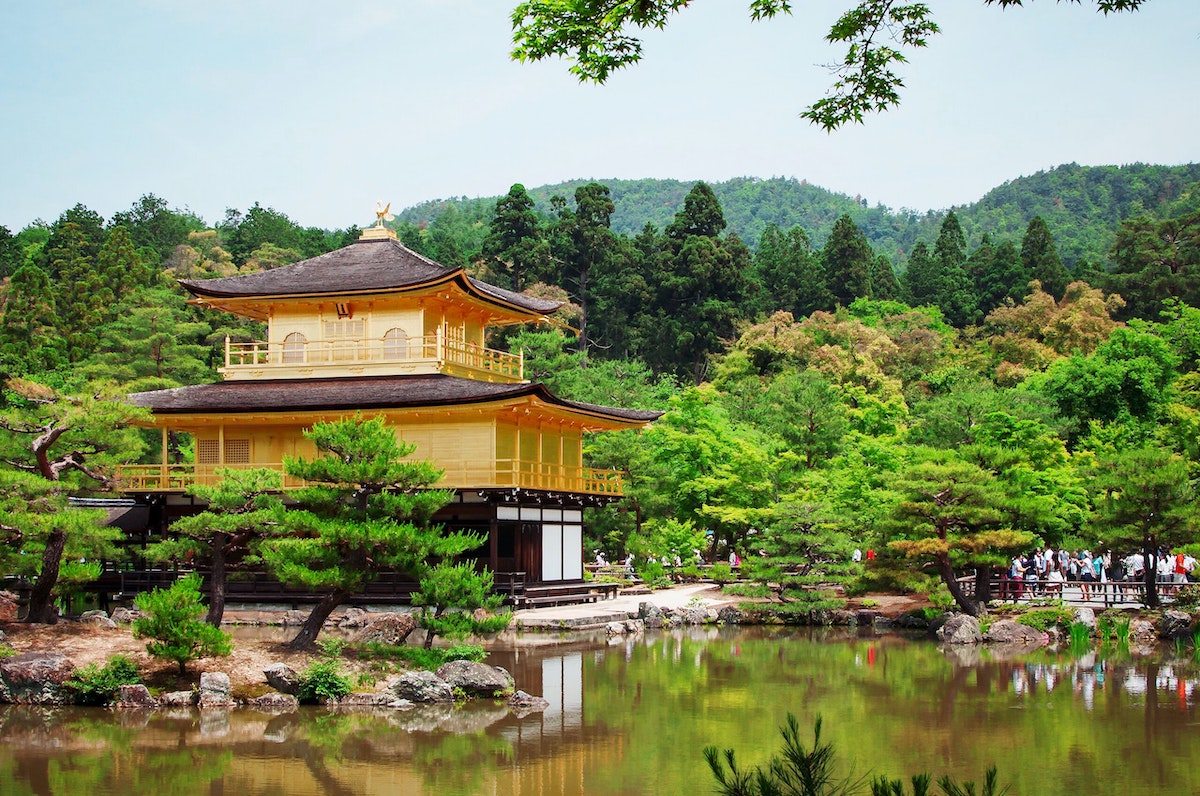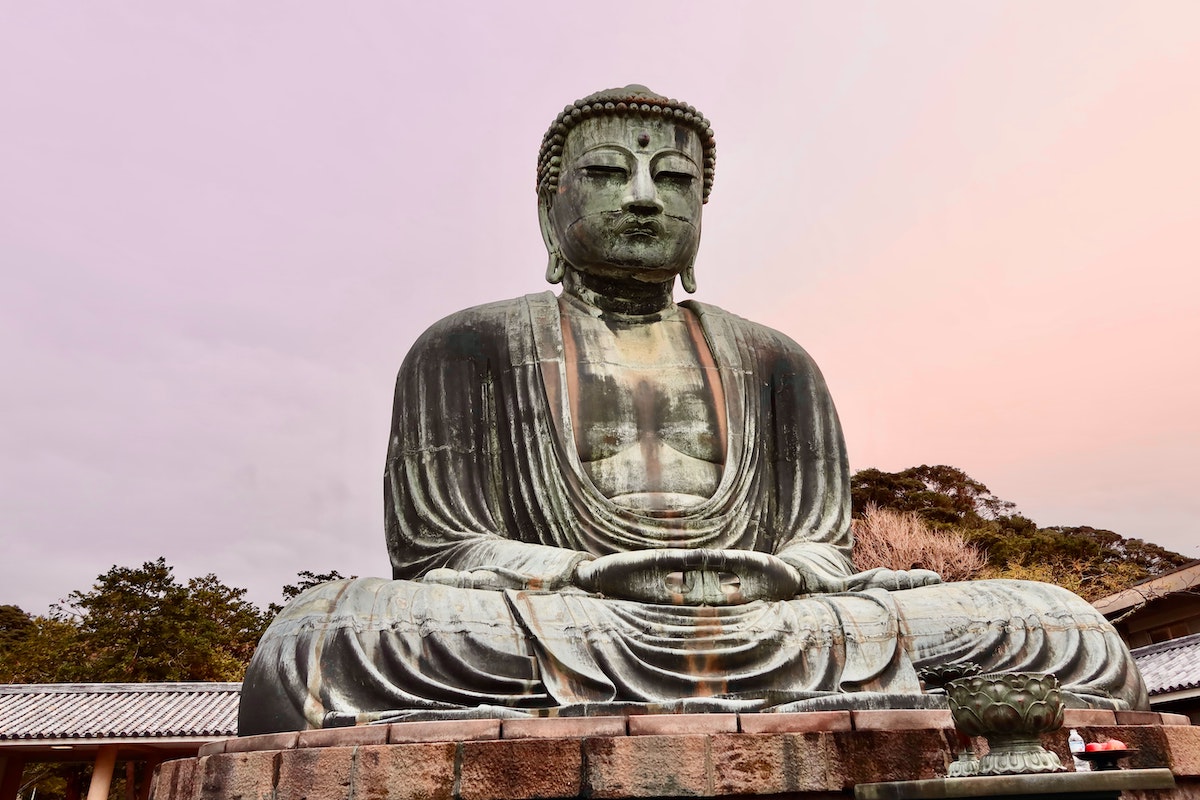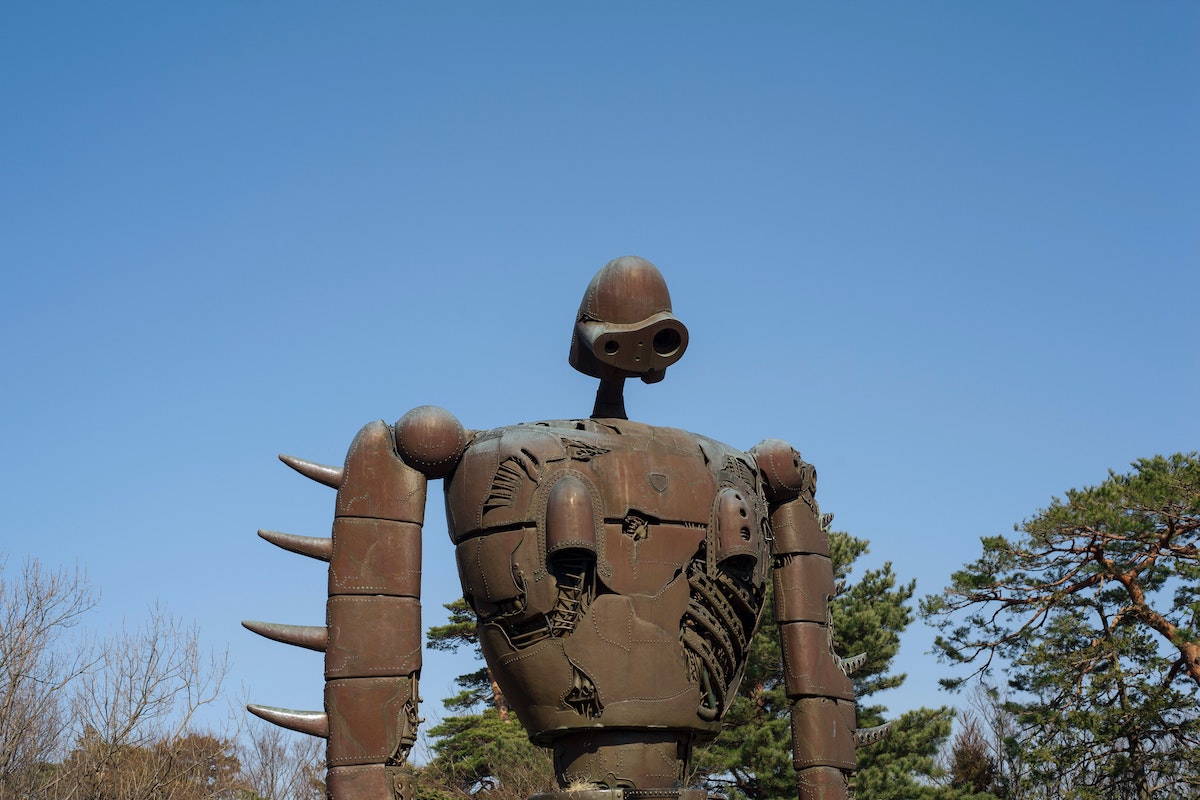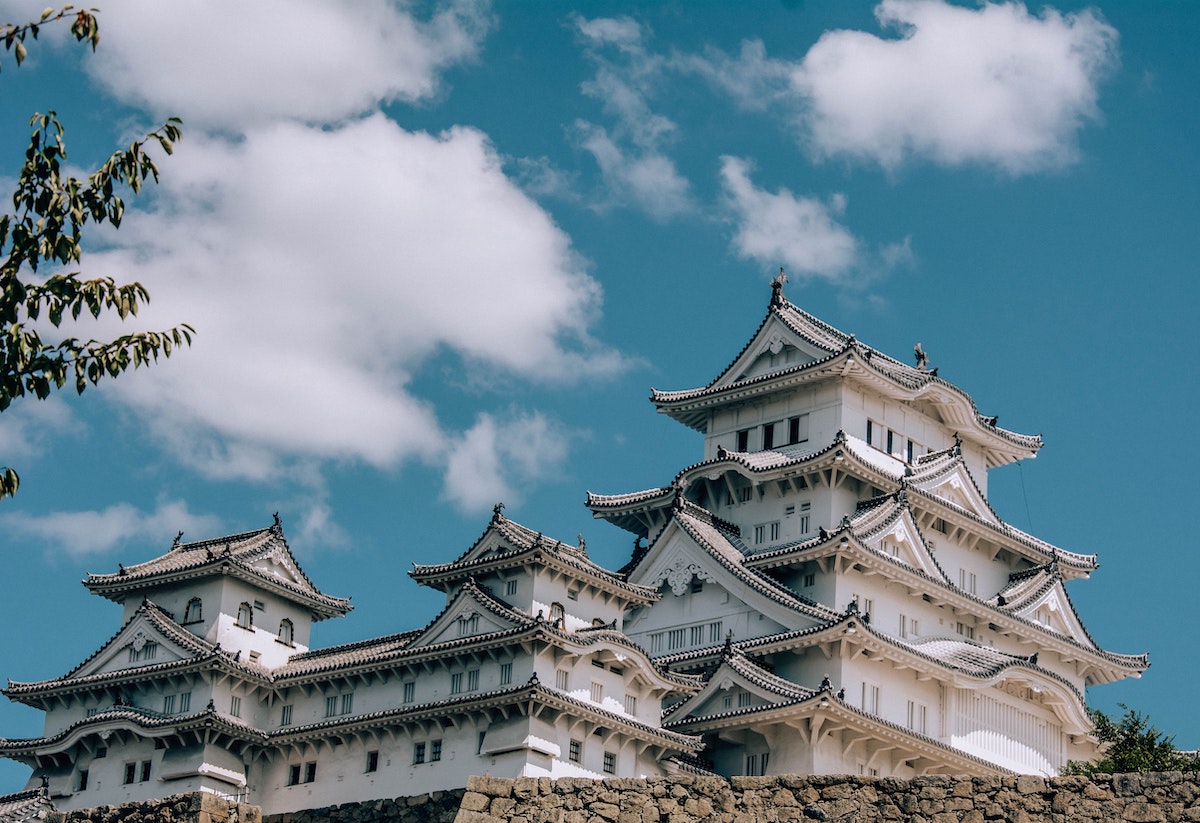Small though it may be, there are dozens of famous landmarks in Japan to explore. This island country of East Asia is brimming with cultural and historical significance. Visitors are welcomed to immerse themselves in the dynamic fusion of ancient tradition and fast-paced modern life that makes Japan so unique.
This article lists 11 of the best and most iconic landmarks Japan has to offer.
1) Mount Fuji, Fujinomiya
Kicking off with the largest and most popular of all landmarks in Japan, Mount Fuji is an active volcano and a centuries-old pilgrimage site. Located a mere 100km from Tokyo, this colossus attraction towers over the thousands of hikers who are drawn to the snowy peaks every year.
Mount Fuji has been a sacred element of Japan’s physical and spiritual geography for centuries. Climbers will be able to spot a number of Shinto shrines at the base and along the ascent of this grand spectacle of nature. Standing as a sacred site for practitioners of Shinto, every step up this natural monument is an ethereal immersion into the indigenous spirituality of Japan.
The Summer months are commonly agreed to be the best time to embark on a trek up this marvelous Japanese monument. The multiple huts dotted along the trails offer refreshments, supplies, and a place to catch your breath as you continue your expedition.
While climbing this mountain is no easy feat, the dazzling sunrise alone is enough to draw wary feet further up the well-trodden path. Most climbers choose to begin their ascent at night in order to witness the Mount Fuji sunrise – referred to as Goraiko – from the highest point possible.
2) Fushimi Inari Taisha, Kyoto
The vermillion Senbon Torii gates of this Shinto shrine are a treasure among Japanese landmarks. Torii gates mark the entrance to shrines and sacred places in Japan and can be found all over the country. Visitors will walk through thousands of these gates along the trails leading towards the sacred shrine grounds of Mount Inari and the wooded forest at its base.
The Fushimi Inari, dedicated to the Shinto God of Rice, is a salient shrine with ancient origins. Visitors to this Japan monument will be drawn to both the mountain trails and gorgeous shrine buildings alike. Make a small offering in the main hall to pay respects to the Inari deity and walk the dense parallel rows of Senbon Torii. It also won’t hurt to learn a bit of the language for basic words of thanks in this sacred place.
While a hike up the mountain trail and back will take about 2-3 hours, visitors are free to wander as they please. Make a stop at the restaurants around the area and enjoy some locally themed dishes – all including fried tofu which is rumored to be a favorite food of the fox.
Keep an eye out for the many fox statues nestled all over the shrine grounds. With coats mirroring the vibrant colors of the shrine gates, foxes are thought to be messengers of the deity Inari. Gazing into the glinting eyes of these fox statues, it’s impossible to ignore the unsettling reverence these beings demand.
3) Tokyo Tower, Tokyo
For a taste of something a little more urban, head over to the vibrant, bustling metropolis that is Tokyo city. In the center of the city stands the steel superstructure of Tokyo Tower. Both a broadcast antenna and one of the more famous Japanese landmarks, Tokyo Tower is an emblem of Japan’s rebirth as a major economic power.
After paying the moderately affordable entry fee, head up to the Main Deck for elevated views of the city. Stand over the windows in the floor for vertigo-inducing sights down through the tower itself. The second platform, known as the High Deck, offers a birds-eye view of the Tokyo skyline. Even the peaks of Mount Fuji crop up in the distance on a clear day.
If you think this Tokyo landmark looks like an orange and white Eifell tower, you’d be right. The Tokyo Tower was modeled after the iconic Parisian structure, only this version is 13 meters taller than its French counterpart. Gorgeous to witness when lit up at night, and with sprawling city views from the interior, this eclectic tower is one of the most iconic urban landmarks of Japan.
4) Shibuya Crossing, Tokyo
Japan landmarks range from natural phenomena to astounding feats of man-made, architectural genius. None, however, are quite so oddly intriguing as the mad scramble of pedestrians across Tokyo’s iconic intersection.
Lights, neon colors, and advertisements flashing in every direction from gigantic screens contribute to the exhilarating chaos of Shibuya Crossing. Aside from the infectious energy of the scene, it’s the continuous flow of people across this street that makes Shibuya Crossing the famous Japan landmark that it is.
The street is continuously teaming with life coming from every direction. Traffic is allowed to pass along. The sidewalks quickly fill up before the green crosswalk light blinks. Then the intersection becomes a swarming mass of people; strutting, jostling, swerving, and sidestepping one another. Shibuya Crossing has featured a number of times in film and media and aspiring photographers can often be seen prowling the area for the perfect shot.
While joining the throng of pedestrians is an unmissable experience, watching the ordeal from one of the many cafes and restaurants nearby can be a contrastingly peaceful time.
5) Itsukushima Shrine, Miyajima
The “floating” shrine of Miyajima is another one of the famous Japanese landmarks with an ethereal air of mystique. Built over water, the Itsukushima Shrine and its torii gate appear to float on the sea during high tide.
While the island itself is formally known as Itsukushima, the name Miyajima (Shrine Island) was coined due to the increasing popularity of the enigmatic shrine. The shrine consists of multiple buildings connected by boardwalks over the water. Here, tourists staying in the Ryokan will be able to enjoy evening walks as the area is illuminated. The torii gate of the Itsukushima shrine stands further in the Seto inland sea, marking the entrance to this holy site of Shinto.
While walking the over-water paths is an otherworldly experience, the island can also be viewed from the deck of a boat cruise around the area. Passengers will pass through the torii gate at high tide.
Speaking of tides, the water levels are important to keep in mind during a visit to these famous Japanese buildings. The shrine and its torii gate are most enticing at high tide when the water rises and the structures appear to hover above the water in a brilliant display of vermillion and black. At low tide, visitors will be able to walk the bay sands and inspect the gate up close.
6) Jigokudani Monkey Park, Yamanouchi
While the many monuments of Japan make for some amazing sights, the natural wildlife of this country is just as much of a necessity to see on any traveler’s bucket list. The Jigokudani Monkey Park and its steaming hot springs are home to the furry, red-faced Macaques.
Along the walk from the entrance of the park to the pool, visitors are sure to come across plenty of these snow monkeys. Touching or feeding the creatures is strictly prohibited. However, the Macaques are pretty unphased with their human audience and will usually allow visitors to observe them up close.
The park remains open all year round but it is commonly agreed that the best time to visit is during the snowy months of January and February. Around this period, snow covers the expanse of the park and the frosty flakes caught in the Macaques hair can make for some brilliant photographs.
Visitors will have the chance to observe the everyday life of these magnificent creatures in their natural habitat – grooming one another, brooding in the hot waters of the spring, and shuffling around in the snow.
7) Atomic Bomb Museum, Nagasaki
To indulge in historical landmarks in Japan is to acknowledge the melancholic along with the grandiose. The Atomic Bomb Museum is the top tourist attraction of the Nagasaki region. This Japan landmark was built in remembrance of the city post-war as well as in tribute to the many victims of the atomic bombing of Nagasaki.
A short walk from the tram stops and Nagasaki station stands the imposing museum building. Walking through the establishment, visitors will learn all about the history of Nagasaki both before and after the devastating impact of WW2. Multiple mangled structures from the area have been preserved inside these walls. One such inclusion is the remains of a water tower that stood at a Junior schoolyard a mere 800 meters from the bomb’s hypercentre.
While reading survivors’ first-hand accounts to witnessing the broken artifacts left behind in the wreckage is a sobering experience, it is also a necessary one. The museum’s manifesto is to educate and contribute to the abolition of nuclear warfare and rally towards everlasting world peace.
8) Kinkaku-ji, Kyoto
This golden pavilion and its surroundings seem fitter for a fairy tale than anything in our reality. The top two floors of this Zen Temple are completely covered in gold leaf that shimmers in the morning sun. Built on the edge of a large tranquil pond, this structure is one of the famous buildings in Japan for a number of reasons.
The temple began as a retirement villa for the shogun Ashikaga Yoshimitsu before being converted into a zen temple after his death way back in 1408. The building has since burned down many times, most recently by a fanatic monk. Time and time again the aristocratic Kinkaku-ji has been rebuilt grander than before.
While visitors are not permitted to enter the grandiose villa, the Shaka Buddha and Yoshimitsu statues in the interior can be viewed from across the pond. Visitors follow paths circling this relic and walk through gorgeous gardens hiding statues and the Edo Period Sekkatei Teahouse.
Sip on matcha tea and let the serene aura of the Kinkaku-ji gardens settle over you. Fanatics of fine art and architecture will particularly enjoy this divine setting.
9) Kamakura Daibutsu, Kanagawa
The Kamakura Daibutsu is an 11.4 meters high statue of Amida Buddha. Until recently, this bronze statue had been the tallest Buddha in Japan. Resting at the Kotokuin Temple, the figure sits in the open air surrounded by green, rolling hills and open skies. Second, only to the Shinto religion, Buddhism has been a pivotal religion in Japan and has long contributed to shaping Japanese culture and society. The Kamakura Daibutsu is but one of many Buddhist shrines to be found all over Japan.
This grand creation originally resided inside large temple walls. However, due to typhoons and tsunamis in earlier centuries, the temple buildings had been destroyed and eventually removed altogether.
Visitors can find this famous monument in Japan just a short walk from the Hase Station in Kamakura. Of all the famous Japanese landmarks, this tranquil bronze being is fairly cheap to view. The Kotokuin temple remains open all year round from 8 am to 5 pm and closes slightly earlier between October and March.
10) Ghibli Museum, Tokyo
It would be impossible to discuss the iconic traits of Japan without mentioning anime. Furthermore, it would be impossible to mention anime without talking about the iconic animation powerhouse that is Studio Ghibli. Beloved films, straight from the minds of famous Japanese directors (including the founder, Hayao Miyazaki himself) have immortalized Studio Ghibli as a film-making icon.
The museum can be found just outside of Tokyo in Mitaka. Fans of film and animation will be thrilled with the opportunity to explore the world of Studio Ghibli. The entire establishment is built to replicate the distinct whimsical nature of Ghibli films and is filled to the chimney tops with a wonderland of exciting exhibits.
Visitors will be able to learn the history of Ghibli as well as animation in the East as a whole. Miniature and life-sized figures of beloved Ghibli characters can be found dotted around the museum.
Accommodating for both children and adults alike, kids will be free to explore the large play area and the magical rooftop garden. Enjoy the novel interior cafe, movie theatre, and gift shop on your trip.
11) Himeji Castle, Kyoto
On a clear, sunny day the stark pious white of the Himeji Castle contrasts with the crisp blue sky in the most picturesque of ways. The imposing size of this regal castle as well as its elegant design makes Himeji Castle one of the most stunning of all Japan’s landmarks.
This long withstanding castle and the surrounding castle grounds have been well preserved through the decades. Now the White Heron Castle – nicknamed for its elegant beauty – is a world heritage site and an important national treasure.
The castle is located an hour’s drive west of Kyoto. Visitors will be allowed to walk the winding Sannomaru paths, lined with cherry blossoms before reaching the Hishi Gate and its entrance fees. The walled paths of the interior create a labyrinth-like trip towards the main building. Tread pathways laden with cherry blossom petals and marvel at the complexities of the archetypal design.
Himeji Castle is best visited in the blooming season of early April when the Cherryblossoms burst with pink flowers. This landmark can get a little crowded in the busy April season. However, this won’t detract much from the gorgeous refreshing sights of such a magnificent monument.
Further reading:
- Japan’s Dancing Cranes
- Japan Cherry Blossoms earliest peak
- What is a Yokai? 15 Mysterious Japanese Demons
- Top 25 Islands in Southeast Asia: Thailand, Indonesia, Malaysia + More
- 10 Amazing and Free Things to do in Singapore
THANK YOU FOR READING THIS LIST OF MY FAVORITE FAMOUS JAPAN LANDMARKS!
SHARE THIS LIST WITH YOUR FAMILY AND FRIENDS TO LET THEM KNOW ABOUT THESE FAMOUS JAPANESE LANDMARKS!


